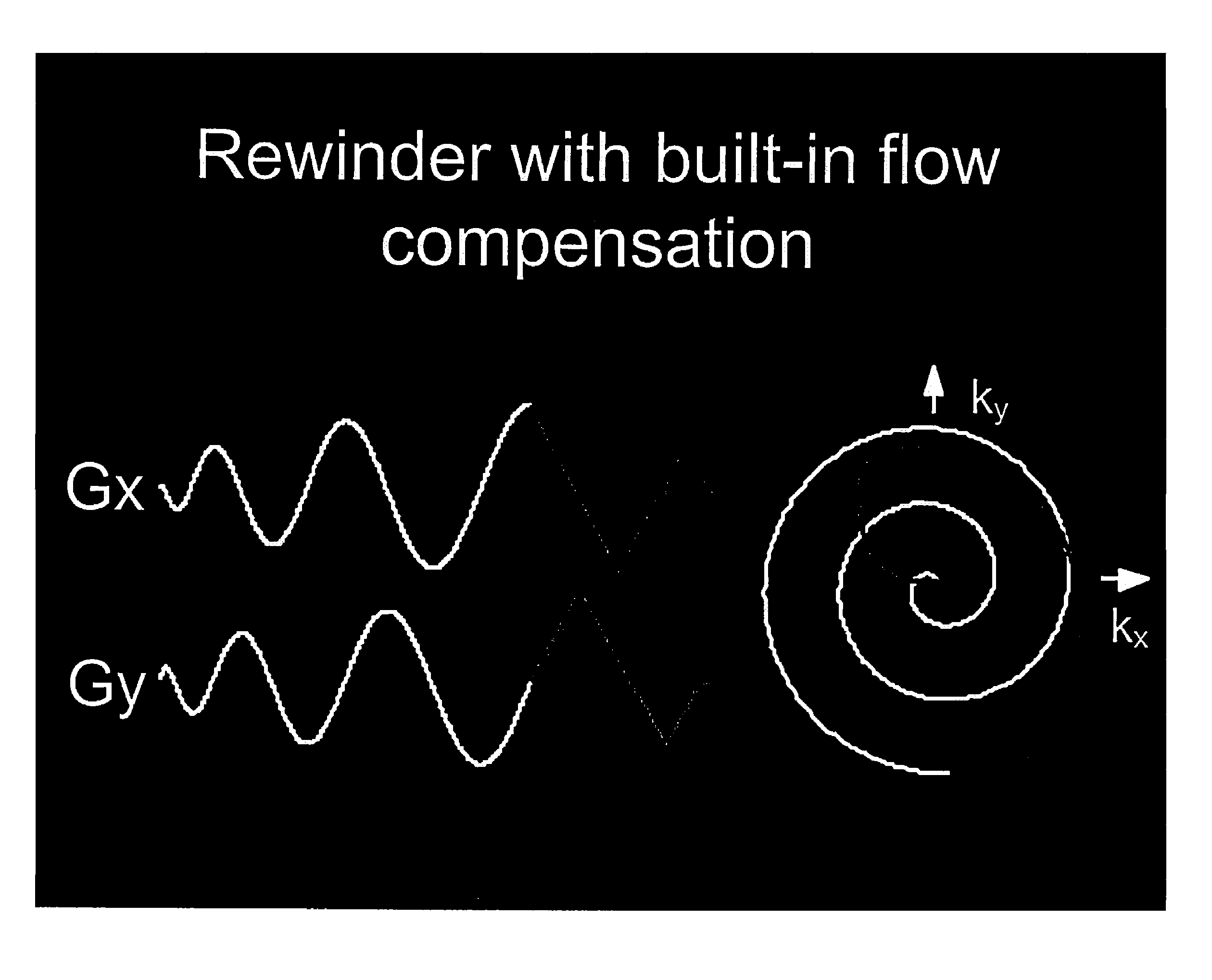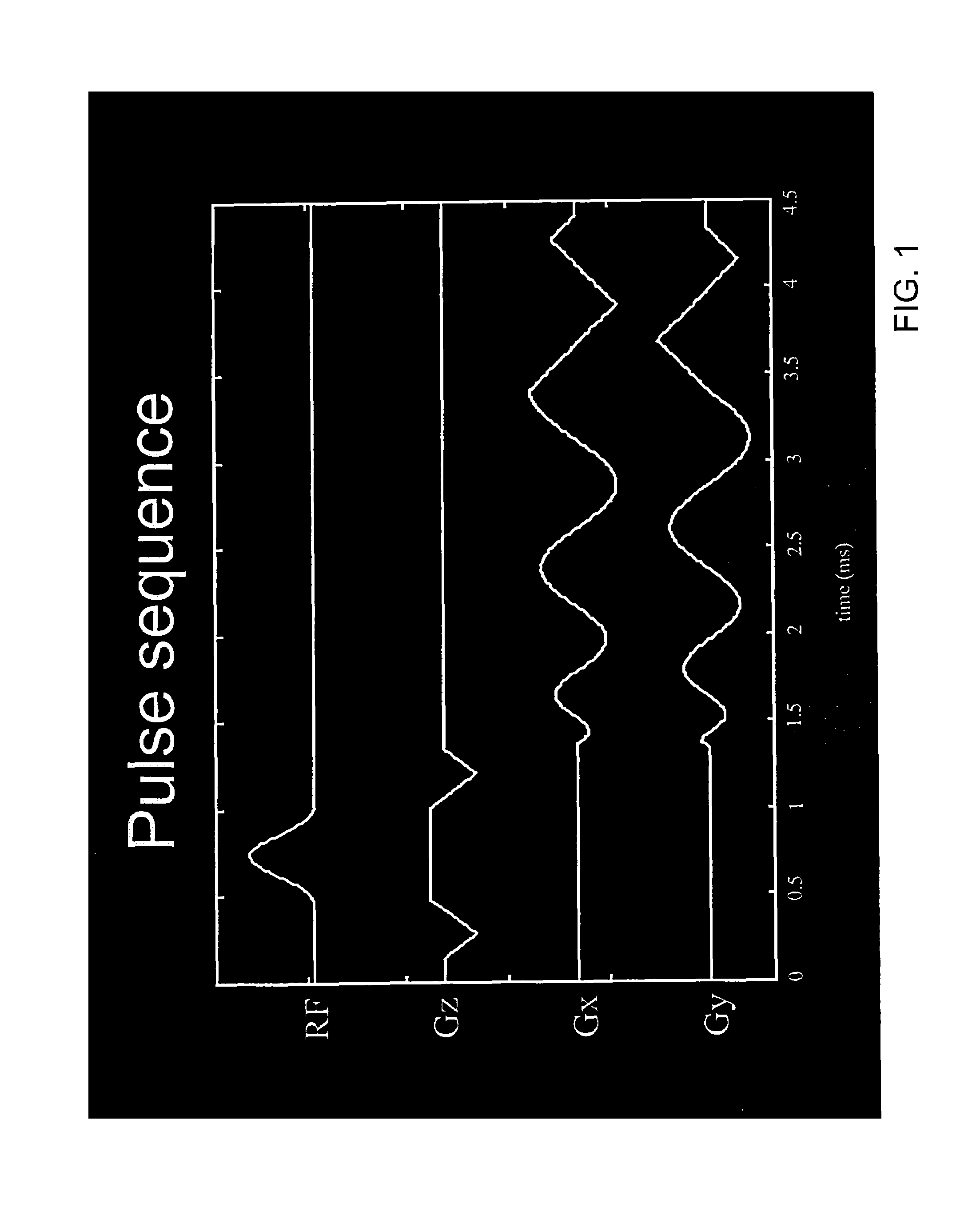Motion compensated spiral FISP MRI
a spiral fisp and motion compensation technology, applied in the field of magnetic resonance imaging, can solve the problems of increased signal and increased blood-myocardium contrast, inadequate signal, and increased frequency of fisp banding, so as to prevent fisp banding artifacts and reduce repetition time
- Summary
- Abstract
- Description
- Claims
- Application Information
AI Technical Summary
Benefits of technology
Problems solved by technology
Method used
Image
Examples
Embodiment Construction
[0022]Referring now to the drawings, FIG. 1 illustrates a pulse sequence in accordance with the invention for combining the contrast of SSFP (FISP) with the efficiency of spiral k-space scanning. An RF pulse is applied in combination with Gz gradient pulses for tilting nuclear spins in an object of interest with slide selection determined by the Gz gradient. Signals from the precession of the tilted nuclear spins are read out in the presence of Gx and Gy gradients. Each of the Gx and Gy gradients includes at the end thereof a rewinder with built-in motion compensation which optimizes for a minimum repetition time, TR, for decreased scan time and decreased sensitivity to inhomogeneity. Further, higher order moments are reduced to thereby reduce sensitivity to acceleration.
[0023]Conventionally, spiral rewinders are provided with Gx and Gy gradients to bring the k-space scan back to the k-space origin as shown in FIG. 2A. Further, a spiral rewinder plus separate bipolar portions have b...
PUM
 Login to View More
Login to View More Abstract
Description
Claims
Application Information
 Login to View More
Login to View More - R&D
- Intellectual Property
- Life Sciences
- Materials
- Tech Scout
- Unparalleled Data Quality
- Higher Quality Content
- 60% Fewer Hallucinations
Browse by: Latest US Patents, China's latest patents, Technical Efficacy Thesaurus, Application Domain, Technology Topic, Popular Technical Reports.
© 2025 PatSnap. All rights reserved.Legal|Privacy policy|Modern Slavery Act Transparency Statement|Sitemap|About US| Contact US: help@patsnap.com



